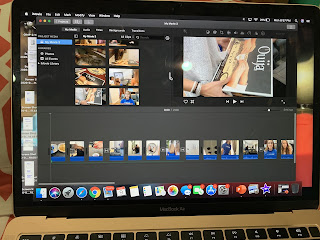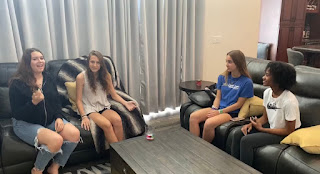Not 100% accurate, but accurate enough to lead me to believe that this assumption is true. Although there are many ways for people to consume films they are certain ones that just stick to humankind. This allows me to form the opinion that they are consumed in the same ways.
The way film is distributed is the way the audience will consume it. After prior steps are complete, both selling film rights and licensing agreements, they are allowed to basically start the distribution process. The first strategy is known to be releasing it through cinemas such as AMC, Regals, and Cinemark. As for where in the world it is shown, it is actually dependent upon the distribution companies. For example, Beauty and the Beast, and Spider-Man Homecoming were distributed worldwide while we were told Guardians of the Galaxy Vol.2 was just flat out distributed. Although they appeared in different times and different places they still appeared through the same concept, theaters. Which is how the audience consumes it. All three movies were first shown to the world with the same strategy which concludes to show that the people all consumed it the same way at first.
When the films reach their theatrical run they now go onto the next distribution step, home exhibition. One type is physical media which includes both DVD and Blu-Ray. As we are told in our studies both Beauty and the Beast and Guardians of the Galaxy Vol.2 were released on Blu-Ray and DVD shortly after their release in theaters. Although we were not told that Spider-Man Homecoming was transmitted through this type of home exhibition, I know for a fact that it was. Once again bringing us to the realization that the movies are shown in the same way, which allows me to believe that the audience is consuming it relatively the same. So far two consumption strategies are exemplified, but this is one more, the one I believe to be the most important.
The second type of home exhibition is Digital Media. Now there isn’t a certain amount of ways to express it like there was for physical media. When it comes to digital you could literally stream it in a variety of places such as Amazon Video, TVs, Netflix, Xfinity Stream, and so on and so forth. Beauty and the Beast was released through Netflix although it was taken down, Guardians of the Galaxy Vol.2 was released through Amazon Video and iTunes, while Spider-Man Homecoming was released through Xfinity stream. Now I’m pretty sure these 3 movies were shown in other places since there is a numerous amount of online services, but the important thing is that they were all online.
In fact, we are also told how Comcast and NBCU pair up to increase the consumption made through digital media. Through many disagreements, brawls, and fights the two companies, one of the biggest TV distributions and one of the highest entertainment companies, came together for greatness. In the outcome, audiences were able to consume not only movies but talk shows, the Olympic Games, and plenty of other major projects. Not only were they able to complete synergy but they were able to increase the home exhibition within digital media.
Although there are 3 strategies presented to consume a film, 3 is nothing compared to billions of people watching. These 3 common ways are basically the only ways we people can consume our movies and shows, and with the number being so limited it is only right for me to believe that opinion is correct. Nowadays everybody consumes films in the same way.
















